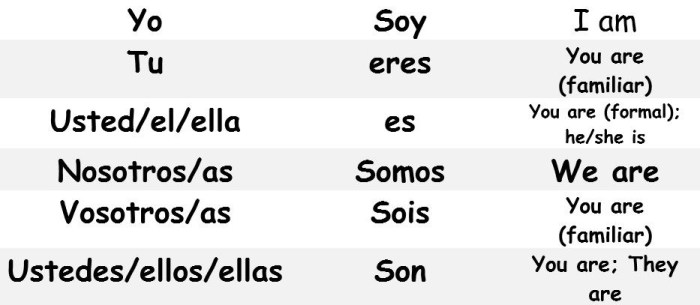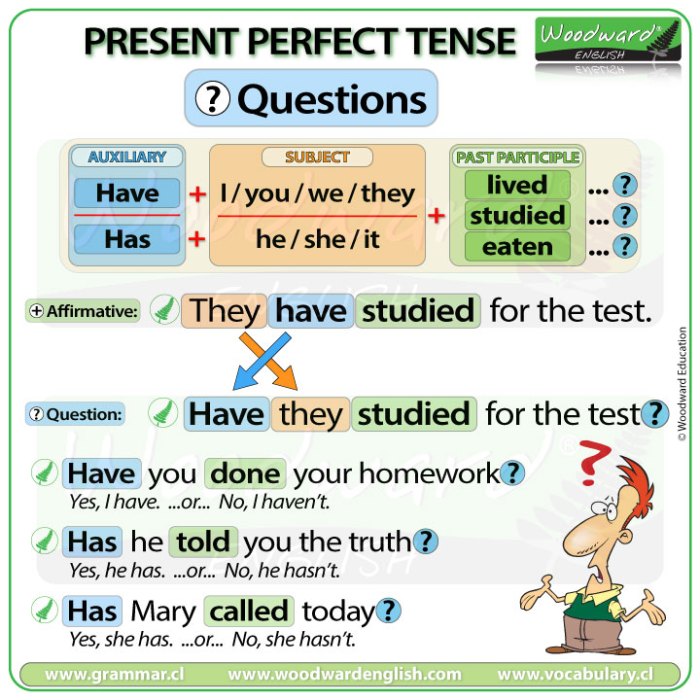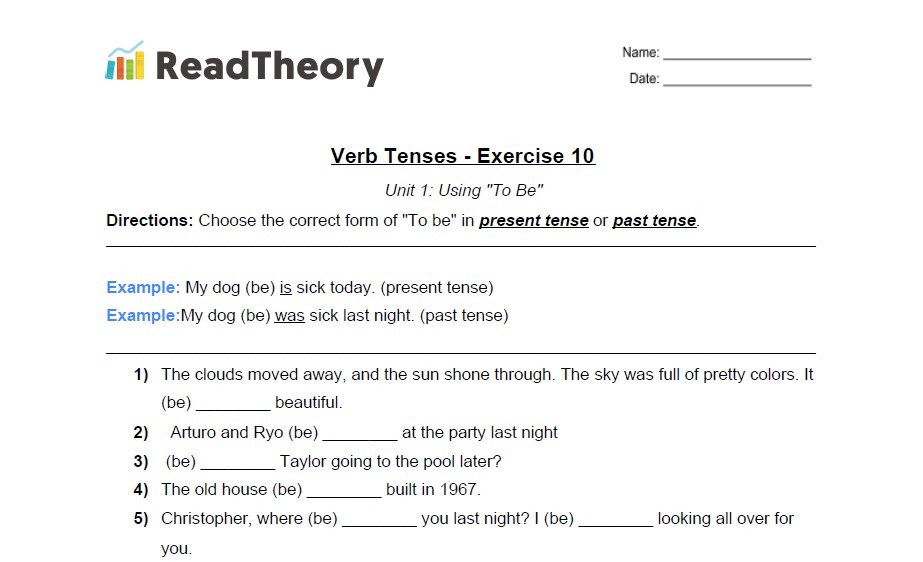Grammar tutorial present tense of ser – Embark on a linguistic journey with this comprehensive grammar tutorial on the present tense of ser, the essential verb in Spanish for expressing identity, characteristics, and essential qualities. This guide will unravel the intricacies of ser’s conjugation, usage, and nuances, empowering you to communicate effectively in Spanish.
Delve into the intricacies of subject pronoun agreement, exploring the harmonious relationship between subject pronouns and verb forms. Discover the versatile applications of ser in everyday conversations, from describing permanent attributes to expressing essential qualities. Through a series of engaging examples and practical exercises, you will gain a profound understanding of ser’s multifaceted role in Spanish grammar.
Present Tense of Ser: Introduction: Grammar Tutorial Present Tense Of Ser

The present tense of “ser” in Spanish is essential for expressing permanent characteristics and states of being. It is used to describe inherent qualities, identities, and relationships that do not change over time.
The present tense conjugation of “ser” is as follows:
Subject Pronoun Agreement, Grammar tutorial present tense of ser
The present tense conjugation of “ser” must agree with the subject pronoun of the sentence.
| Subject Pronoun | Verb Form |
|---|---|
| yo | soy |
| tú | eres |
| él/ella/usted | es |
| nosotros/nosotras | somos |
| vosotros/vosotras | sois |
| ellos/ellas/ustedes | son |
Usage and Examples
The present tense of “ser” is commonly used to:
- Describe permanent characteristics or qualities: Soy alto. (I am tall.)
- Indicate profession or occupation: Soy médico. (I am a doctor.)
- Express nationality or origin: Soy español. (I am Spanish.)
- Describe relationships: Ella es mi hermana. (She is my sister.)
- Identify time or place: Hoy es lunes. (Today is Monday.)
Comparison with Estar
The present tense of “ser” is often contrasted with the present tense of “estar”, which is used to describe temporary states or conditions.
| “Ser” | “Estar” |
|---|---|
| Permanent characteristics | Temporary states |
| Identifies qualities | Describes conditions |
| Inherent nature | Current circumstances |
Negation and Interrogation
To negate the present tense of “ser”, use the word “no” before the verb:
- No soy alto. (I am not tall.)
To form questions, invert the subject pronoun and verb:
- ¿Eres médico? (Are you a doctor?)
Question words can also be used with “ser” in the present tense:
- ¿Quién es? (Who is it?)
- ¿Qué es esto? (What is this?)
Advanced Usage
The present tense of “ser” can also be used in advanced constructions, such as:
- Expressing essential qualities: Es importante ser honesto. (It is important to be honest.)
- Describing habitual actions: Soy una persona que siempre llega a tiempo. (I am a person who always arrives on time.)
- Making comparisons: Soy más alto que mi hermano. (I am taller than my brother.)
Q&A
What is the purpose of the present tense of ser?
The present tense of ser is used to express permanent characteristics, essential qualities, and identities in Spanish.
How do I conjugate ser in the present tense?
The present tense conjugation of ser is: yo soy, tú eres, él/ella/usted es, nosotros/nosotras somos, vosotros/vosotras sois, ellos/ellas/ustedes son.
What is the difference between ser and estar?
Ser expresses inherent qualities and identities, while estar describes temporary states or locations.

